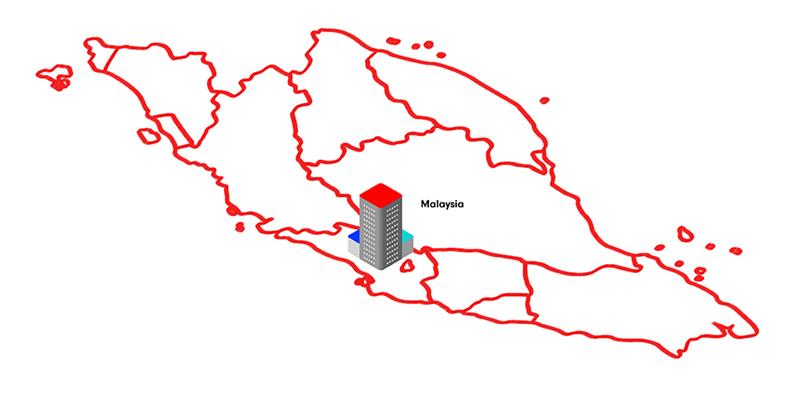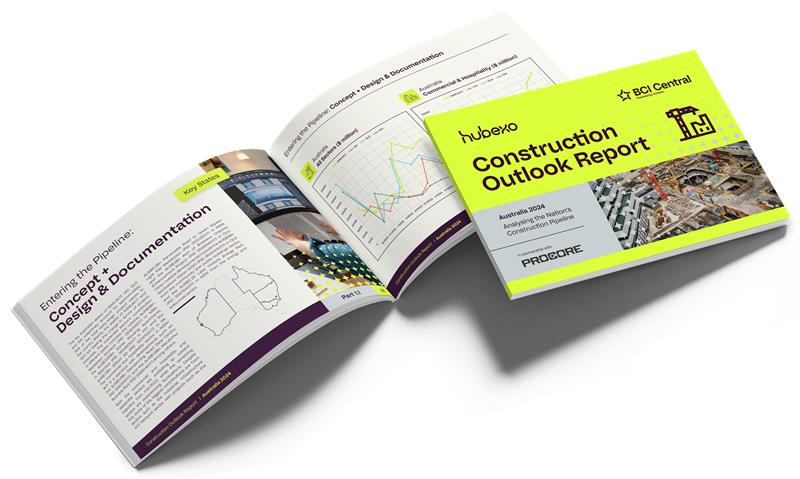- Rumah
- >
- Embracing Technology and Risk Management: Highlights from Construction Leaders’ Discussion
Embracing Technology and Risk Management: Highlights from Construction Leaders’ Discussion

Construction industry leaders recently convened to discuss pressing challenges and emerging opportunities in the sector, with a particular focus on navigating market uncertainties, managing supply chain disruptions and increased technology adoption.
By many measures, Australia’s construction industry is flat chat, presenting a challenging environment for many construction businesses.
Demand in numerous sectors has surged, yet persistent high borrowing and material costs persist. Moreover, prolonged delays in material imports, extended project timelines and a severe shortage of skilled labour have exacerbated the challenges in ensuring project viability. Meanwhile, increasing insolvencies, risk-averse contractors and limited funding persistently strain the industry.
BCI Construction League Panel
Amidst these challenges, industry leaders, speaking at Sydney Build Expo on the BCI Construction League Panel, pointed to advancements and adoption of new technologies and emerging and strengthening sectors as opportunities for cautious optimism and growth.
Pannellits included Marc Avery, NSW Director at Icon; Paul David, National Head of New Business and Strategy at Hutchinson Builders; Robert Furolo, Executive Manager – Corporate Communications at Deicorp; Tim Trimble, Construction Manager at Kapitol Group; as well as Ashley Martinson, Head of Account Management – Australia at BCI Central.
The panel discussion coincided with the release of the third edition of the Liga Pembinaan BCI. The report ranks the nation’s top 50 construction firms based on the total value of projects commenced in the past year, focusing on the commercial, community, industrial, legal & military, and multi-residential sectors. The rankings provide insights into the total number of projects, the total project value and the average project value of each firm.
Here is an edited transcript of their construction sector insights.

Speakers at the Sydney Build Expo
BCI: What significant challenges has your business faced in the past year and have any opportunities emerged as a result?
Avery: The biggest challenge we’ve got at the moment is how to create that stigma of certainty when things are so uncertain. We’re heavily invested in managing supply chain risks, with personnel worldwide ensuring material availability. Anticipating shipments is one thing; securing materials upon arrival is another. So, we invest significant time to ensure we receive those materials in this uncertain world.
David: There are numerous hurdles we face. Severe weather conditions along the eastern seaboard have significantly impacted our programs. Additionally, the persistent skill shortage has become increasingly evident, resulting in a noticeable decline in productivity. Pre-Covid, productivity levels on construction sites were approximately 20 per cent higher compared to the present, highlighting the stark impact of the post-Covid workforce grappling with skill shortages and underemployment.
Furolo: In addition to the rising costs of materials and labour shortages, we’re grappling with the effects of increasing interest rates. The heightened cost of capital is particularly challenging for projects initiated several years ago, which were originally planned with funding at a different cost level. With funding becoming notably more expensive, builders face significant hurdles in maintaining project feasibility and profitability.
Trimble: The primary challenge we’re facing is the supply chain, which continues to pose significant difficulties. Although we’ve been fortunate to see success in the data centre sector, the soaring demand has exacerbated lead times for essential components. However, amidst these challenges, there are ample opportunities emerging, especially in the build-to-rent sector, as well as in refurbishments, data adaptation, and repurposing existing properties.
BCI: How can construction firms manage rising costs and contractor insolvencies in a tough market, while remaining profitable?
Avery: As the second-largest employer in the country, we need to actively engage in efforts to broaden the talent pool and increase productivity. Drawing from insights from our parent company’s experiences in Japan, where similar labour shortage challenges exist with an ageing population and a disinterest in construction among the youth, we are exploring innovative strategies to address these issues and ensure a sustainable workforce.
David: We’re investing $20 million in prefabrication at Hutchies Modular in Newcastle to help meet the Albanese government’s goal of building 1.2 million homes in five years. This smart approach allows us to work efficiently and seize opportunities in the housing market crisis.
Furolo: Collaborating closely with our key partners, clients and suppliers has been crucial in addressing insolvency challenges. Additionally, due to market uncertainty in new residential projects and our commitment to quality, we’ve invested significantly in enhancing our reputation and track record.
Martinson: Insolvencies due to interest rate hikes and market challenges create opportunities for other builders. To overcome these hurdles, a ruthless strategy within the business is essential. This involves minimising time and resource wastage and leveraging strategies like prefabrication. Prioritising profitable projects and strategic resource allocation based on data analysis can ensure sustained success amidst market fluctuations.
Trimble: We’re focused on reducing waste in various aspects, including on-site waste and minimising reworks. Ensuring subcontractors have smooth operations is vital, achieved partly by getting the initial design right. Consequently, we’re making significant investments in our design capabilities.
BCI: What big changes do you foresee in the construction landscape over the next 24 months?
Avery: It’s crucial to focus on green developments and build-to-rent initiatives, areas where future investments are poised to grow. On a broader scale, addressing the housing shortage is the central challenge facing the construction industry. Solving this fundamental issue will unlock opportunities across civil infrastructure, amenities and education. Ultimately, ensuring everyone has a place to call home should be our top priority, driving progress and opportunity across the entire industry.
David: Builders across the industry are focused on returning to profitability. We’re anticipating a decent profit this fiscal year, but with narrow margins, even small changes can have significant impacts. For instance, we had to allocate $40 million for insolvency, primarily due to subcontractors going bankrupt. The subcontractor market, composed of numerous SMEs, is critical to the industry’s functioning. Before COVID, one in three subcontractors had tax debts, indicating potential insolvency for a third of the industry. Today, that figure has risen to two in three, signalling a concerning trend.
Furolo: We expect small to medium builders to discover potential in new transport zones, allowing for relatively straightforward construction of housing up to six storeys. This shift presents an opportunity for these builders to step up and undertake larger projects.
Martinson: In the last quarter of last year, there was a dip in projects entering the pipeline, but Q1 of this year has shown a significant increase across various sectors. Residential projects have seen a 10% rise compared to last year, while the infrastructure sector has experienced an almost 800% surge. Office buildings and industrial offices have also seen a 350% increase. Despite industry challenges, this dramatic upturn is positive news.
Trimble: We’ve witnessed significant progress in data centres nationwide, which has been beneficial for us. This trend is expected to persist, particularly with the continuous growth of AI and digital engineering. We intend to remain active in this space for as long as possible.
BCI: Just how crucial are new technologies in your business, and how have you leveraged them for growth and efficiency?
Avery: Sustainability is at the forefront of our efforts. The industry is moving towards carbon neutrality, and we’re focusing on material technology to minimise waste and reduce our carbon footprint. Australia is a global leader in smart building, and our advancements in product and material development are promising. By tapping into international frameworks and supply chains, we aim to address one of humanity’s biggest challenges: reducing carbon emissions.
David: With software and technology, no single product covers everything, so we often use multiple tools for one task. To manage this, our business analyst team collaborates with IT to evaluate available technologies. We trial these on-site and within small teams to measure efficiency gains. Only after passing these tests do we consider broader implementation. Given that Hutchins has 25 autonomous business units, we pilot new technologies in a few units before wider rollout.
Furolo: Businesses must leverage technology to stay viable. We’re focusing on using data from past projects to improve future ones, aiming to save on materials and optimise project sequencing. It’s crucial that our key partners and suppliers also adopt efficient technologies and integrate with our systems to enhance overall efficiency and collaboration.
Martinson: Data oversight is more crucial than ever. Knowing market trends for the next six months to two years, and leveraging BCI and AI technologies, provides critical insights into industry directions. Successful companies are those embracing new APIs and technologies, ensuring full project oversight, and adopting innovative, green-friendly products. Efficient internal management systems, powered by data-driven tools, can save significant time on tasks like quoting, benefiting everyone moving forward.
Trimble: Over the next five years, we anticipate either doing the same amount of work with half as many people or twice as much work with the same number. To achieve this, we’re heavily investing in digital engineering, particularly in BIM models, not just for clash detection but for Virtual Digital Construction (VDC). This allows us to sequence projects for safe and efficient building while maintaining quality. We are also using innovative tools like OpenSpace AI, which functions like Google Street View, providing real-time QA checks.
BCI: Where will you and your team be focusing your efforts on the immediate future, within the next 12-month period?
Avery: We’re undertaking significant work in the Pacific, including places like Vanuatu, Tonga, and Fiji. Using advanced technology, such as drones, software, and video conferencing, we can provide work and income for local people, which is incredibly impactful and rewarding. Additionally, we are part of a joint venture with Barpa, owned by Icon (49%) and six Aboriginal land councils from Victoria. Barpa is doing remarkable work across the country, bringing modern facilities and high-tech solutions to remote areas, which is incredibly exciting. This joint effort not only enhances infrastructure but also creates employment opportunities for local communities, making a substantial difference.
David: There’s been a significant shift in mindset from clients, who now see builders as partners rather than just contractors. This shift means clients value the expertise, reliability, and teamwork that builders bring to the table. Gone are the days of simply selecting the lowest bid. Smart clients are choosing builders based on fit for the project and the quality of the relationship. This approach promotes a balanced risk profile in contracts, leading to more collaborative partnerships over the next decade.
Furolo: As a builder and developer, the next six months will be particularly exciting as we hand over 800 new apartments to their new owners, providing them with new homes. In the next 12 months, we will begin work on another 4,000 apartments across Sydney, with approvals already secured or expected soon. This period will be busy, but the highlight is definitely handing over the keys and seeing people move into their new homes.
Martinson: Over the next 12 months, the focus will be on monitoring and understanding the most profitable and community-beneficial projects. With the (NSW) government investing $1.9 billion in the residential market, there’s significant growth expected, especially in infrastructure and train lines. This development aims to build communities, provide housing, and improve accessibility to cities and jobs.
Trimble: There’s a lot going into prefabrication right now and we’re looking very actively at regional centres, especially around Victoria, to prefabricate and bring these designs to site in a much quicker turnaround time.
Explore the latest rankings of Australia’s top builders in this year’s Liga Pembinaan BCI. Take a deeper dive by downloading the report now.





